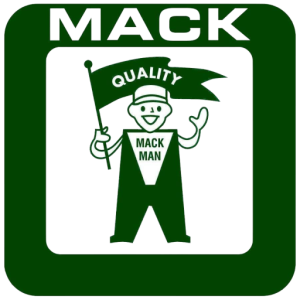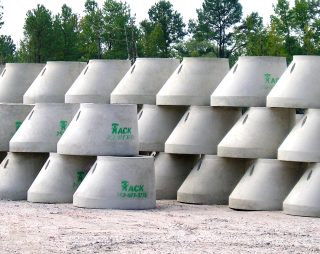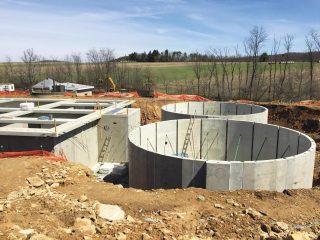When you buy ready mix concrete, safeguards should be in place to minimize cracks that can occur with any residential or commercial project.

Effective planning will mitigate cracks for everything from a new driveway for a homeowner to a state highway bridge.
Cracks can appear early on or years after ready mix is poured. Examples and causes include:
- Improper jointing
- Plastic shrinkage
- Concrete settlement issues
- Freezing and thawing
Concrete will contract and expand based on moisture levels and temperature shifts. But those conditions can be anticipated. Here are some of the key considerations to keep in mind:
Subgrade
Effective support is essential. Otherwise, the concrete may crack when it settles. The soil should always be compacted, smooth and uniform before any base (like gravel) is added to support the concrete. The compaction process minimizes any settling when concrete is added. Otherwise, cracks can form if the subgrade settles in key areas, such as the middle of a concrete slab or around the edges.
Additionally, the subgrade should be sloped to ensure proper drainage. Concrete shouldn’t be placed if the subgrade is frozen.
Construction Joints
Whether they’re formed with plastic, saw cuts or hardboard preformed strips, contraction joints can reduce cracks based on where they’re placed. They provide for controlled cracking, meaning any cracks only appear where you want them – typically out of view and not the type that can harm the integrity of the concrete. Timing is crucial. Concrete should be jointed right away (at least within several hours). For example, you don’t want to risk having a crack form before sawing a joint. When used effectively, joints allow the concrete to shrink as it dries without leading to internal restraint, a condition that can occur when concrete slabs don’t shrink at the same time or they each shrink in contrasting directions.
Slump
High slump concrete can lead to cracking. That’s why it’s important to monitor water-cement ratios that shouldn’t vary more than 0.01. When the ready mix is going to be poured, you should be cautious about making jobsite adjustments. Sometimes water can be added depending on how temperatures affect the aggregate content, such as sand. But water can increase the slump too much and result in an unbalanced concrete mix. Too much water can ultimately limit the strength of the concrete.
Curing
Proper curing is vital to keep cracks from developing when the concrete is placed. Contractors often use a curing compound after the concrete is poured. During curing, which can span several days, contractors rely on spraying or wet coverings to help minimize rapid moisture loss. If the concrete shrinks too fast, minor or severe cracks could emerge.
Crews can help avoid cracks in other ways, including insulating the exposed surface with thermocol sheets and with effective finishing techniques, such as flat troweling.
Would you like to know more about how Mack Industries supplies ready mix for residential and commercial projects? Contact us today or call 800-482-3111.




